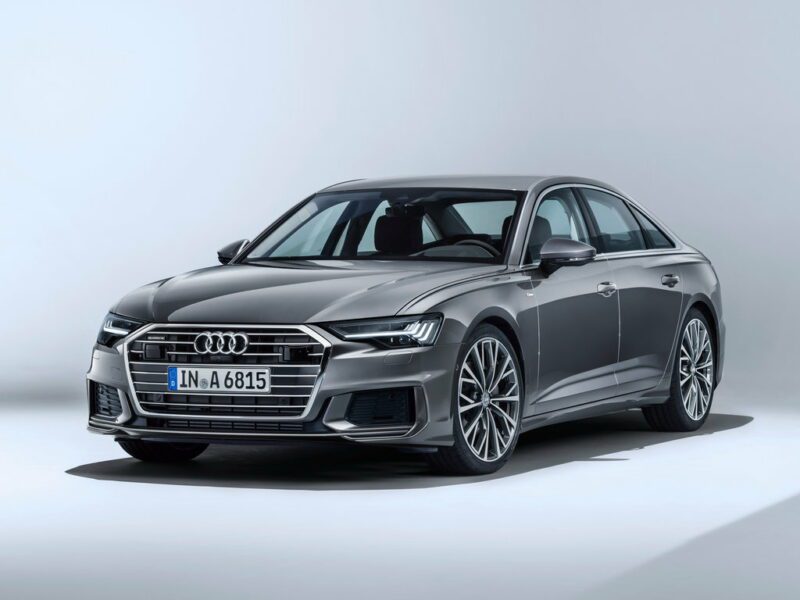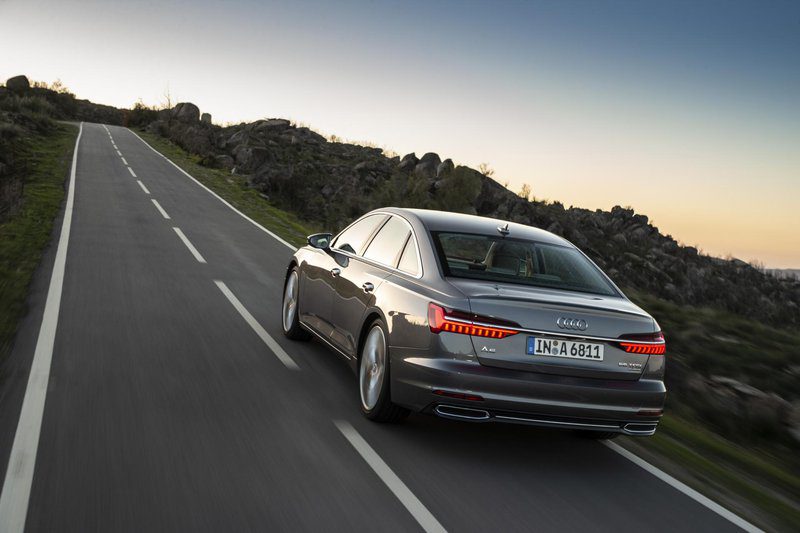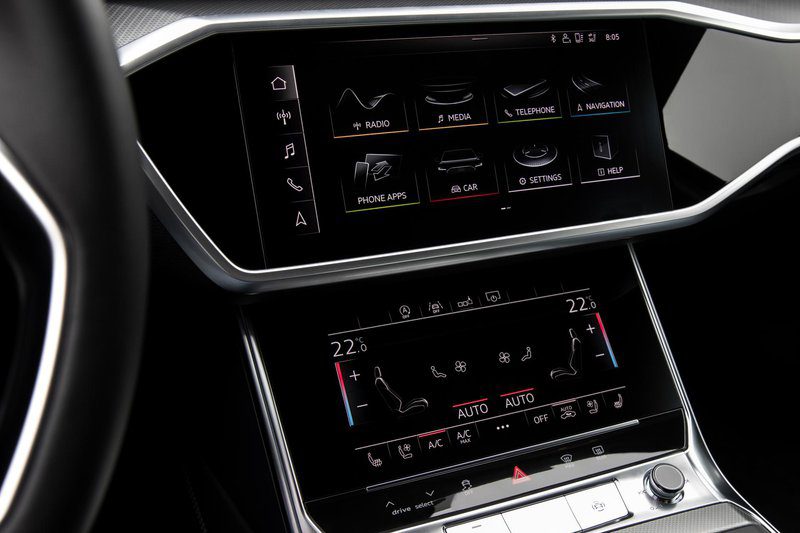
The new Audi A6 is already the fifth generation of the six.
In 1994, with the advent of the first generation of the eight, Audi changed the name of the models: from a purely numerical designation to the letter A and a number. So the former Audi 100 was updated and became the Audi A6 (with the internal designation C4, that is, the same as the Audi 100 of that generation). Thus, we could even write that this is the eighth generation of six - if we include all the hundreds (and two hundred) in his pedigree.
But let's leave the numbers (and letters) game aside as it really doesn't matter. Importantly, the new A6 is arguably the most digital and connected car in its class.

In other words: usually, manufacturers on the front pages of texts intended for journalists brag about how many centimeters the car has grown compared to the previous generation. This time, this data (and they are only millimeters) is buried deep in the materials, and on the front page Audi can boast how much the diagonal of the LCD screen of the infotainment system has grown, how much the processor speed has increased and how much the speed of the car has increased. the connection progressed. Yes, we landed (digitally) at times like these.
The interior of the new A6 is marked by three large LCD screens: a 12,3-inch in front of the driver, digitally painted with gauges (and a bunch of other data, including a navigation map), this is already a well-known novelty (well, not quite, because the new A8 and the A7 Sportback have the same system) and this is the center piece. It consists of an upper 10,1-inch, intended for the main display of the infotainment system, and a lower, 8,6-inch, intended for air conditioning control, the most frequently used shortcuts (there can be up to 27 of them and can be phone numbers, items navigation assignments, frequently used functions, or whatever) and data entry in the form of a virtual keyboard or touchpad. In the latter case, the driver (or passenger) can write on it with his finger anywhere. Even letter by letter, the system has been worked out to the smallest detail and is able to read even the most illegible font.

When the screens are turned off, they are completely invisible due to the fact that they are covered with black lacquer, and when turned on, they glow elegantly and, above all, are user-friendly. Haptic feedback (for example, the screen vibrates when receiving a command) greatly improves the driving experience, and above all, it is easier to control the controls while driving.
The A6 offers the driver 39 different safety systems. Some are already looking to the future - with regulation, the car will be able to drive partially autonomously at the third level (that is, without direct driver control), from driving in traffic jams on the highway to fully automatic parking (including searching for a parking space). ). Already now it can follow the car in front of it in traffic (or stay in the lane, but of course the driver's hands must be on the steering wheel), prevent dangerous lane changes, warn the driver of an approaching speed limit by, for example, hitting the accelerator and speed are adapted to the cruise control limits.

At launch, there will be one diesel and one gasoline six-cylinder engine available, both three-liter. The new 50 TDI is capable of 286 "horsepower" and 620 Nm of torque, while the petrol 55 TFSI has an even healthier 340 "horsepower". In combination with the last shift, the seven-speed S tronic, i.e. the two-speed automatic transmission, will be engaged, while the classic eight-speed automatic transmission will work with the diesel engine. Of note is the new Mild Hybrid System (MHEV), which is powered by 48 volts (for a 12 volt four-cylinder engine) and a starter / generator that drives all auxiliary units via a belt and can produce up to six kilowatts of regenerative power (six-cylinder). More importantly, the newcomer can now sail with the engine off in a wider speed range (160 to 55 kilometers per hour and below 25 kilometers per hour on the more powerful system), while the engine restarts instantly and imperceptibly. Six cylinders can go up to 40 seconds with the engine off in these speed ranges, while four-cylinder engines with a 12-volt mild hybrid system can go for 10 seconds.

Both four-cylinder engines will hit the road a few months after the start of sales (but we already know their prices: a good 51k for diesel and a good 53k for gasoline). Audi's two-liter turbodiesel (40 TDI Quattro) has been completely redesigned and is in many ways a new engine, so they also changed the internal factory designation, which is now called EA288 Evo. It is capable of developing a power of 150 kilowatts or 204 "horsepower" and 400 Newton-meters of torque, and is extremely quiet and quiet (for a four-cylinder turbodiesel) operation. The capacity data is not yet known, but the combined consumption can be expected to be around five liters. The two-liter turbocharged petrol engine with the designation 40 TFSI Quattro will be capable of developing a maximum power of 140 kilowatts.
Quattro all-wheel drive is always standard, but not always. While both six-cylinder engines include the classic Quattro with a center differential, the four-cylinder engines have a Quattro Ultra with a multi-plate clutch next to the transmission, which also transmits torque to the rear wheels when needed. To save fuel, a toothed clutch is integrated in the rear differential, which, when the multi-plate clutch is open, also disconnects the connection between the rear wheels and the differential and propeller shaft.

The Audi A6 can (of course) also be designed with an air chassis (with which the car is very easy to drive, but depending on the settings, also dynamic or very comfortable), as well as a classic chassis (with electronically controlled shock absorbers). in combination with 18-finger rims, it is quite capable of softening bumps even on bad roads.
Optional four-wheel steering, which can steer the rear wheels five degrees: either in the opposite direction at low speeds (for better maneuverability and a meter smaller driving radius), or in the direction of travel (for stability and dynamics when cornering.)).
The Audi A6 will hit Slovenian roads in July, initially with both six-cylinder engines, but four-cylinder versions can also be ordered at launch, which will be available later. And of course: a few months late, the A6 sedan will be followed by the Avant, followed by the Allroad and sports versions.
